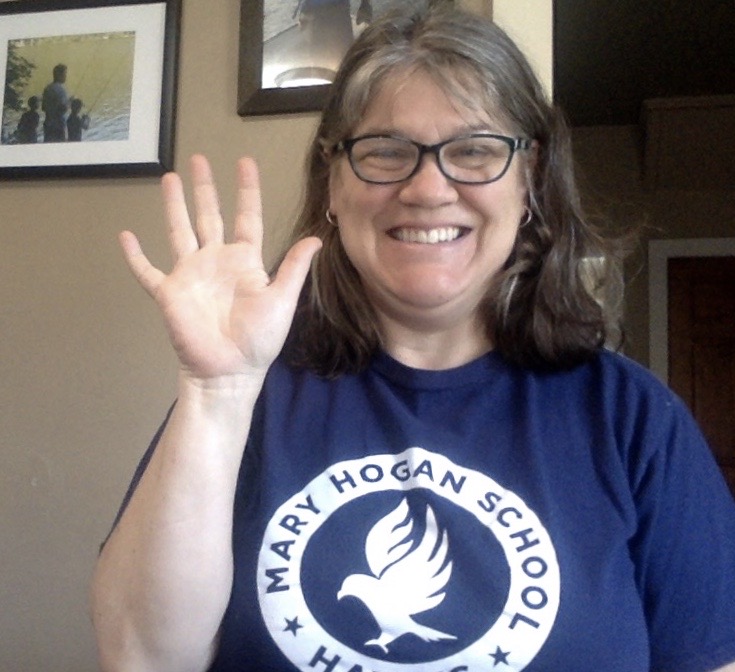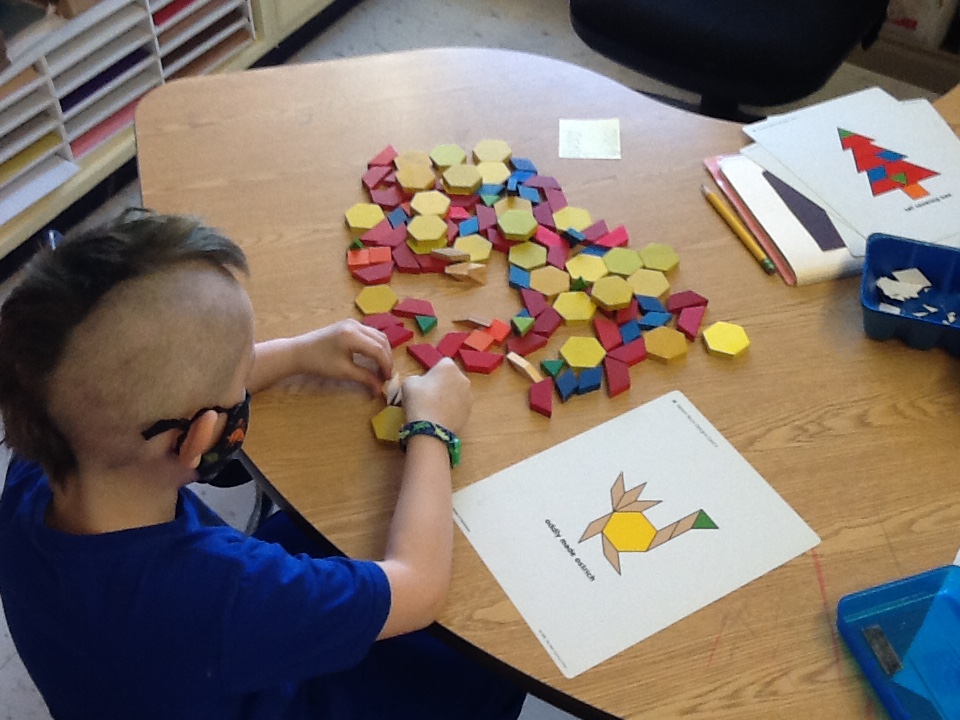

Julie Schondube has been teaching kindergarten at Mary Hogan Elementary School for the last 19 years. This year looks a bit different — instead of hugs and high fives for individual greetings in the morning, the kids wave or dab or do a silly dance. Instead of sitting around tables, each kindergartener has their own desk. Everyone wears a mask and keeps three feet of physical distance. But Mrs. Schondube goes out of her way to make sure kids are still making connections. “That’s what it’s all about,” she said.
Here are three things she recommends doing with your child to help prepare them to start kindergarten:
- Encourage independence. Nudge them towards dressing themselves, zipping their own coats, knowing how to go to the sink and wash their hands by themselves.
- Read, play games and go outside together often.
- Be a kindergarten cheerleader. Your kids are listening to you; be enthusiastic about school and talk it up!


Schondube walked me through a typical day in kindergarten this year, and gave us a sense of what she anticipates for next year, though many details remain unknown because of the pandemic.
“The structure of the day has pretty much stayed the same, with the difference being how kids relate to each other spatially,” explained Schondube.
She begins every day by greeting each child individually as they arrive. Then the kids do their morning jobs: unpacking their backpacks and putting them in cubbies, and signing in for the day.
Then, they can eat breakfast. In previous years, kindergarteners would walk down to the cafeteria with a buddy to grab their food and bring it back to the classroom. This year, a cafeteria cart delivers to their classroom.
This year’s health and safety guidelines keep kids primarily in their own classrooms. Instead of going as a group to the library or the gym or the music room, a librarian or PE teacher or music teacher comes to them.
Schondube anticipates that by next fall this could go back to the way it always was, with kids moving about the school building more freely. And she’s happy about that.
“It’s been hard being in the room as much as we are,” she said. (They spend a lot of time outdoors, too, but she is referring to the fact that when indoors, they’re pretty much confined to their classroom.)
“Part of coming to kindergarten is learning your school, learning your building,” she said. “Next year, hopefully, if can use the whole building, we’re going to have first graders who have never eaten in the cafeteria, never been in the gym.”
Still, she says in some ways the consistency this year has been good for the kids. She’s noticed them learning the routines of the day more quickly than in previous years.
Breakfast is followed by Morning Meeting, which is when they discuss what they’ll do that day.
It’s followed by Choice Time, which might include building something, socializing with peers or doing a one-on-one activity.
After this, the kindergarteners have work time, where they break into smaller groups to do literacy or math activities. “Eventually we work into teaching the kids to be at an independent station,” Schondube said.
Next: Recess! This year the classes have used the playground on a rotating schedule. On non-playground days, the kids play on the black top or the athletic fields.
Then it’s time for lunch, which is eaten at desks in the classroom.
Schondube follows that up with a game, and then a story.


After that, kindergarteners have quiet time. They each have a mat where they can look at books, or rest, for about 15 minutes, to recharge for the afternoon.
After another round of math or literacy work time, Schondube likes to take the kids out to explore the woods behind the school, or just walk a loop around the sidewalk.
Then it’s snack time, and then Special (music, art, PE, library).
“One thing that happened this year that I loved,” said Schondube, “is that we now have our specials time (music, art, PE, library) at the same time every day. I’ve been asking for that for years, and it took COVID for it to happen.”
Schondube is hoping this change will stick after the pandemic is over.
Everybody packs up around 2:30, and then Schondube leads them out to the busses or the sidewalk where parents pick them up.
Schondube said the biggest challenge this year was setting up her classroom in a way that worked for pandemic health guidelines, but was also conducive to the kind of collaborative learning that happens in kindergarten.
“I had to change my room set-up, like, four times in the beginning of school this year,” she said. “By the end of it, I’m looking out at 5- and 6-year-olds sitting at desks, not having them all around a table [the way it was pre-pandemic].
“But if you look at my walls, the walls are the same, and student work is up all over them.
“We’re making it so that they can (connect with one another). They’ve risen to the challenge as well, with their masks, and the quick reminders — remember, 3 feet! It’ll be nice when we can hug again.”


